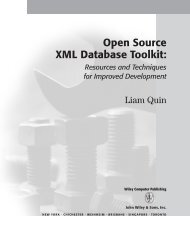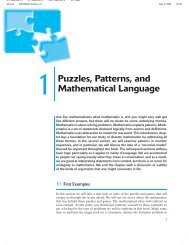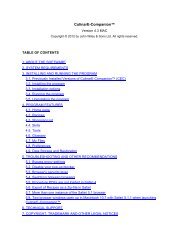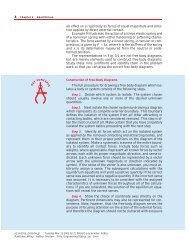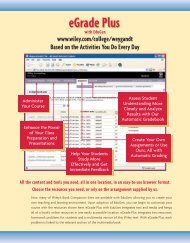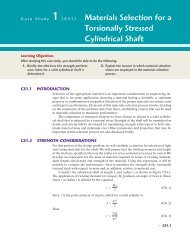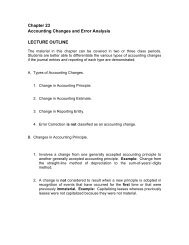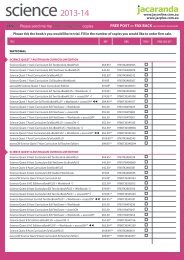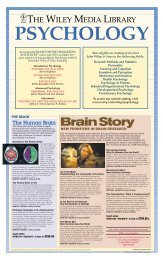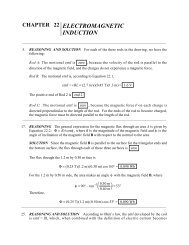Chapter Two - Wiley
Chapter Two - Wiley
Chapter Two - Wiley
Create successful ePaper yourself
Turn your PDF publications into a flip-book with our unique Google optimized e-Paper software.
8956d_ch02_056 7/21/03 12:36 PM Page 56 mac76 mac76:385_reb:<br />
56 CHAPTER 2 A Further Look at Financial Statements<br />
Illustration 2-1<br />
Characteristics of useful<br />
information<br />
A company can change to a new method of accounting if management can<br />
justify that the new method produces more useful financial information. In the<br />
year in which the change occurs, the change must be disclosed in the notes to<br />
the financial statements so that users of the statements are aware of the lack of<br />
consistency.<br />
The characteristics that make accounting information useful are summarized<br />
in Illustration 2-1.<br />
Tell me only what<br />
I need to know.<br />
I promise to tell<br />
the whole truth<br />
You could set your<br />
watch by this<br />
stagecoach.<br />
BIG<br />
SHOT<br />
Apples<br />
Oranges<br />
Which is better?<br />
Relevance<br />
1. Provides a basis for forecasts<br />
2. Confirms or corrects prior<br />
expectations<br />
3. Is timely<br />
Reliability<br />
1. Is verifiable<br />
2. Is a faithful representation<br />
3. Is neutral<br />
Comparability<br />
Different companies use<br />
similar accounting principles<br />
Consistency<br />
Company uses same accounting<br />
methods from year to year<br />
STUDY OBJECTIVE<br />
3<br />
Identify two constraints in<br />
accounting.<br />
Helpful Hint In late 1999, the<br />
SEC issued stricter rules on<br />
materiality because it felt that<br />
too often companies were using<br />
materiality as an excuse<br />
not to report certain losses.<br />
Constraints in Accounting<br />
The characteristics we have discussed are intended to provide users of financial<br />
statements with the most useful information. Taken to the extreme, however, efforts<br />
to provide useful financial information could be far too costly to the company.<br />
Therefore, constraints have been agreed upon to ensure that accounting<br />
rules are applied in a reasonable fashion, from the perspectives of both the company<br />
and the user. Constraints permit a company to apply generally accepted<br />
accounting principles without jeopardizing the usefulness of the reported information.<br />
The constraints are materiality and conservatism.<br />
MATERIALITY<br />
Materiality relates to a financial statement item’s impact on a company’s overall<br />
financial condition and operations. An item is material when its size makes<br />
it likely to influence the decision of an investor or creditor. It is immaterial if<br />
it is too small to impact a decision maker. In short, if the item does not make a<br />
difference, GAAP does not have to be followed. To determine the materiality of<br />
an amount—that is, to determine its financial significance—the item is compared<br />
with such items as total assets, sales revenue, and net income.<br />
To illustrate how the constraint of materiality is applied, assume that Best<br />
Buy made a $100 error in recording revenue. Best Buy’s total revenue is $10<br />
billion; thus a $100 error is not material.<br />
CONSERVATISM<br />
Conservatism in accounting means that when preparing financial statements,<br />
a company should choose the accounting method that will be least likely to overstate<br />
assets and income. It does not mean, however, that one should intentionally<br />
understate assets or income.



